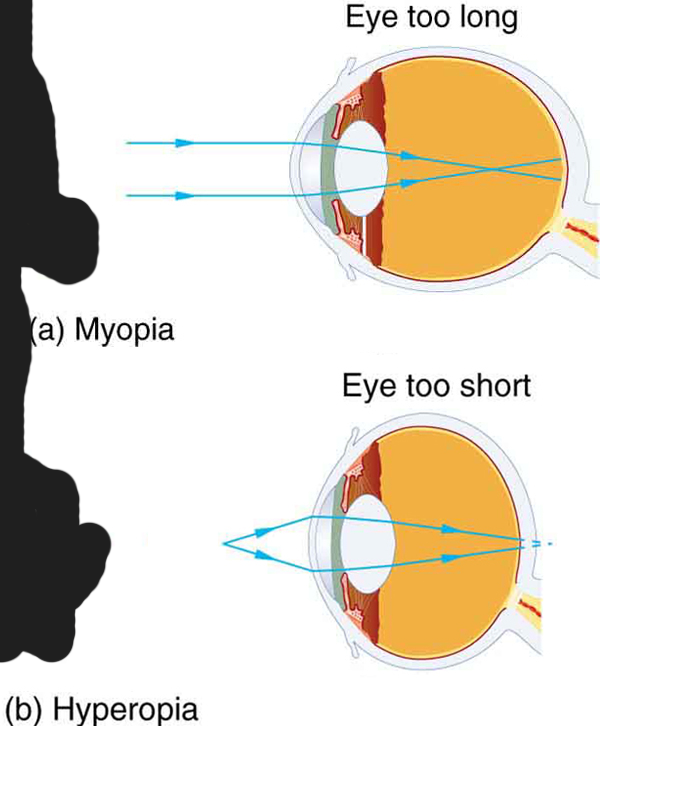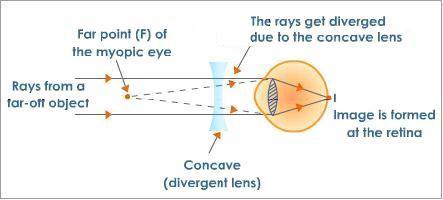The question is as follows: "Which type of lens might be used to correct for nearsightedness?"
Answer choices:
A. Convex
B. Concave
C. Either convex or concave, depending on the focal length.
D. Either convex or concave, depending on how nearsighted the person is.
I had answered A, but the correct answer is B. And this confuses me. Concave lenses always produce virtual images, and virtual images in lenses are always on the same side of the lens as the object. This would mean that a diverging lens would create an image outside of the eye, rather than inside the eye on the retina, right? Wouldn't this make one blind?
The important thing to remember with the eye is that it adjusts the focal length to focus an image on the retina via changing the radius of curvature (and focal length) with the ciliary muscles. This is called accommodation.
Taking this a step further, in a perfectly working eye, you have a fixed image distance because you want that image to form on the retina at ALL times to focus. In addition, the object distance is fixed. Just to reiterate all the eye can do is change the focal length which is an inherent property of a lens assuming it's dimensions can't change. But the dimensions of the lens in the eye can change via accommodation! In order to make the math easier and more conceptual we can pretend an object is at a distance of infinity away. If that is the case 1/f = 1/i + 1/infinity = 1/f + 1/i
Therefore, in this scenario f = i, so the image will form at the focal length. In a normal non-myopic eye, we will relax the ciliary muscles via norepinephrine beta adrenergic signaling. This will cause the eye to stretch and increase it's radius of curvature, thus increasing the focal point so that the image will form on the retina.
When you are nearsighted (myopia/myopic) you have a hard time seeing distances that are far away. This is because the lens in your eye cannot stretch enough to increase the focal length and place the image formed on the retina. Again, normally, we can see objects as far off as "infinity", but when we are nearsighted there is a maximum far point you can see, and beyond that far point you cannot focus on the object because the image is forming in front of the retina.
If the image distance (again, in this scenario it equals the focal length) is going to be in front of the retina you will not be able to focus. This brings about a situation like (a) in the example shown below where the image is forming at the focal point and the focal point is before the retina so it will be fuzzy (look at the point where the rays intersect). You can see the image is forming BEFORE the retina.

The idea is that by using a DIVERGING lens (concave) you will create a situation where you have a virtual image that forms WITHIN the nearsighted (myopic) persons "far point". Better said, when you place an object outside of the radius of curvature of a diverging lens, a virtual image will form within the radius of curvature/focal point. Thus, the virtual image created by the diverging lens will be closer to the eye so the image will now form at the retina. Or said another way, the diverging lens allows the focal point to occur a little farther back allowing the image to be formed on the retina just like in the image below which shows a corrective diverging lens on a myopic eye.
Finally, a virtual image does not mean you cannot see it. It just means you cannot project it. In a sense, if someone is myopic and wears corrective lenses the initial image they are seeing is "virtual".
Conceptually, this is one of the hardest topics on the MCAT. It really helped me to go and look into this further to fully wrap my head around it with resources other than TBR.


